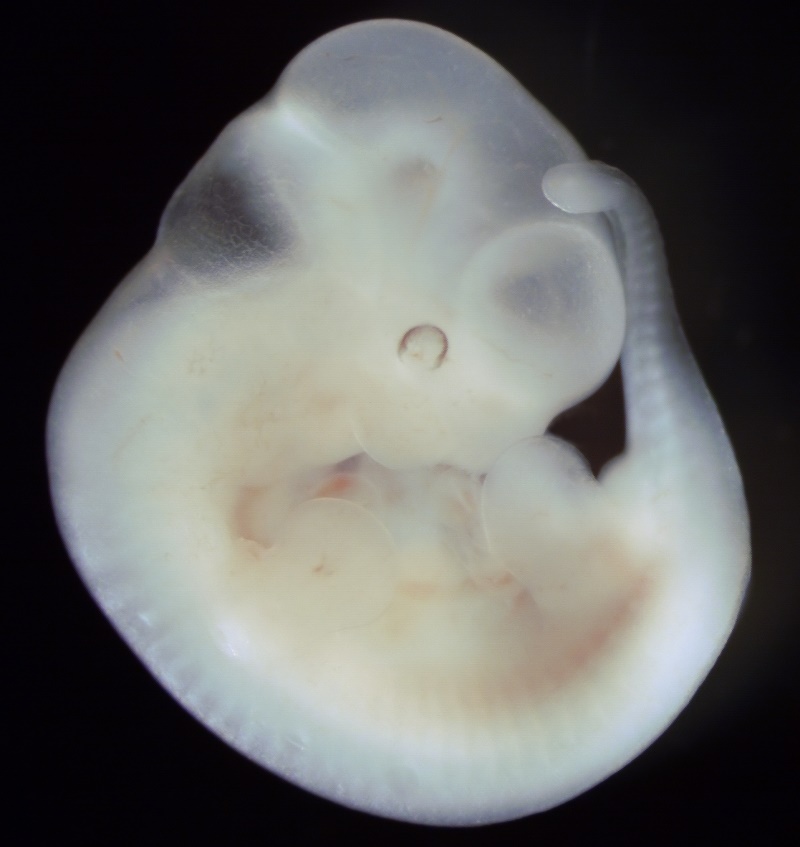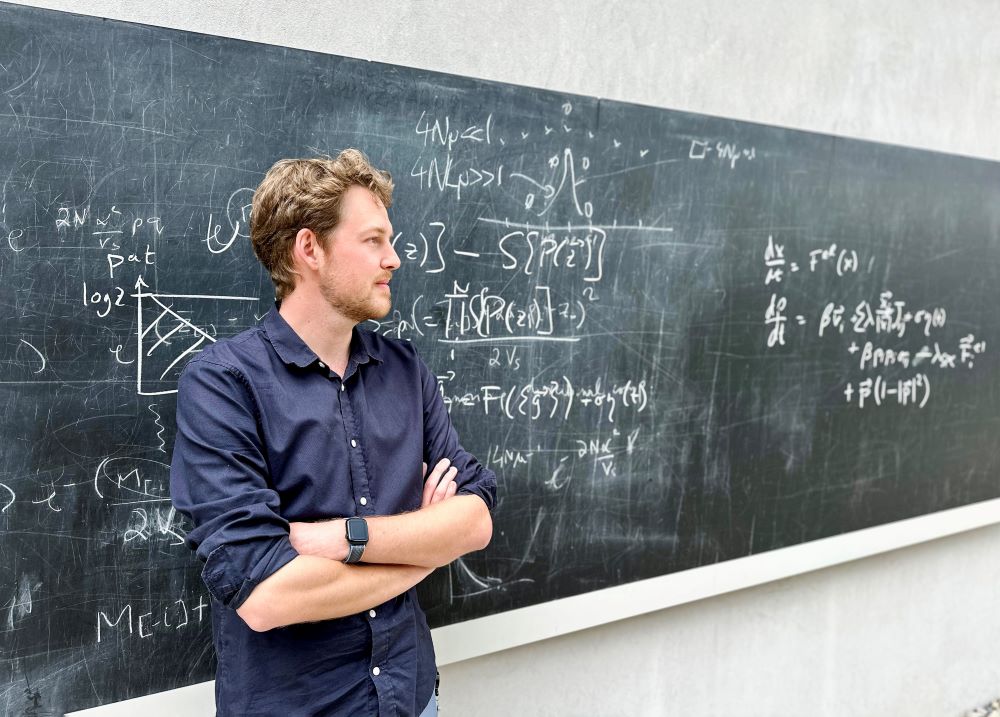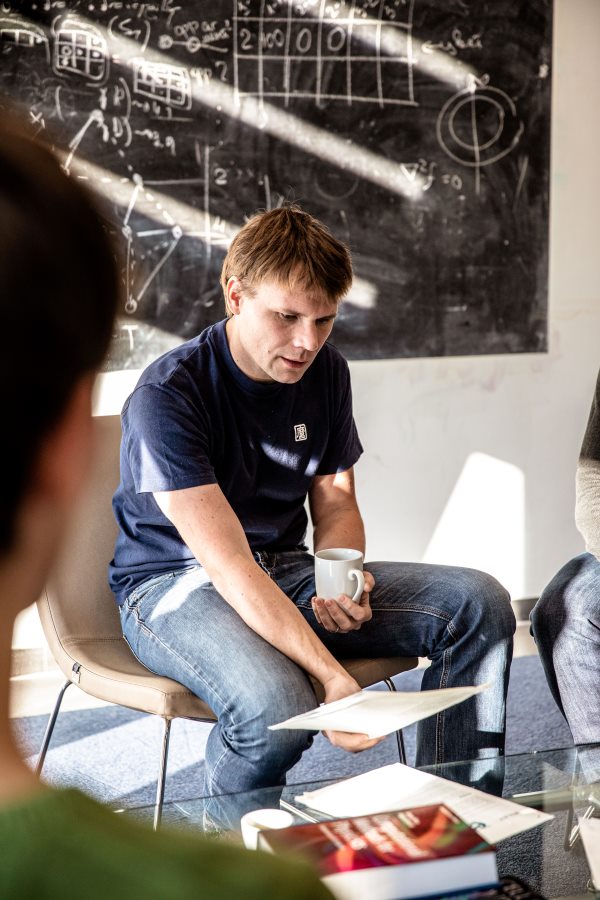June 3, 2024
The Embryo Assembles Itself
New mathematical framework sheds light on how cells communicate to form embryo
Biological processes depend on puzzle pieces coming together and interacting. Under specific conditions, these interactions can create something new without external input. This is called self-organization, as seen in a school of fish or a flock of birds. Interestingly, the mammalian embryo develops similarly. In PNAS, David Brückner and Gašper Tkačik from the Institute of Science and Technology Austria (ISTA) introduce a mathematical framework that analyzes self-organization from a single cell to a multicellular organism.

When an embryo develops, many types of cells with different functions need to be generated. For example, some cells will become part of the eye and record visual stimuli, while others will be part of the gut and help digest food. To determine their roles, cells are constantly communicating with each other using chemical signals.
Thanks to this communication, during development, everything is well synchronized and coordinated, and yet there is no central control responsible for this. The cell collective is self-organized and orchestrated by the interactions between the individuals. Each cell reacts to signals of its neighbors. Based on such self-organization, the mammalian embryo develops from a single fertilized egg cell into a multicellular organism.
David Brückner and Gašper Tkačik from the Institute of Science and Technology Austria (ISTA) have now established a mathematical framework that helps analyze this process and predict its optimal parameters. Published in PNAS, this approach represents a unifying mathematical language to describe biological self-organization in embryonic development and beyond.
The self-assembling embryo
In nature, self-organization is all around us: we can observe it in fish schools, bird flocks, or insect collectives, and even in microscopic processes regulated by cells. NOMIS fellow and ISTA postdoc David Brückner is interested in getting a better understanding of these processes from a theoretical standpoint. His focus lies on embryonic development—a complex process governed by genetics and cells communicating with each other.

During embryonic development, a single fertilized cell turns into a multicellular embryo containing organs with lots of different features. “For many steps in this developmental process, the system has no extrinsic signal that directs it what to do. There is an intrinsic property of the system that allows it to establish patterns and structures,” says Brückner. “The intrinsic property is what is known as self-organization.” Even with unpredictable factors—which physicists call “noise”—the embryonic patterns are formed reliably and consistently. In recent years, scientists have gained a deeper understanding of the molecular details that drive this complex process. A mathematical framework to analyze and quantify its performance, however, was lacking. The language of information theory provides answers.
Bridging expertise
“Information theory is a universal language to quantify structure and regularity in statistical ensembles, which are a collection of replicates of the same process. Embryonic development can be seen as such a process that reproducibly generates functional organisms that are very similar but not identical,” says Gašper Tkačik, professor at ISTA and expert in this field. For a long time, Tkačik has been studying how information gets processed in biological systems, for instance in the fly embryo. “In the early fly embryo, patterns are not self-organized,” he continues. “The mother fly puts chemicals into the egg that instruct the cells on what actions to take.” As the Tkačik group had already developed a framework for this system, Brückner reached out to develop one for the mammalian embryo as well. “With Gašper’s expertise in information theory, we were able to put it together,” Brückner adds excitedly.

Beyond embryo development?
During embryonic development, cells exchange signals and are constantly subject to random, unpredictable fluctuations (noise). Therefore, cellular interactions must be robust. The new framework measures how these interactions are possibly optimized to withstand noise. Using computer simulations of interacting cells, the scientists explored the conditions under which a system can still have a stable final result despite introducing fluctuations.
Although the framework has proven to be successful on three different developmental models that all rely on chemical and mechanical signaling, additional work will be required to apply it to experimental recordings of developmental systems. “In the future, we want to study more complex models with more parameters and dimensions,” Tkačik says. “By quantifying more complex models, we could also apply our framework to experimentally measured patterns of chemical signals in developing embryos,” adds Brückner. For this purpose, the two theoretical scientists will team up with experimentalists.
Publication:
David Brückner & Gašper Tkačik. 2024. Information content and optimization of self-organized developmental systems. PNAS. DOI: 10.1073/pnas.2322326121
Funding information:
This project was supported by funding from NOMIS foundation and by an EMBO Postdoctoral Fellowship (ALTF 343-2022).



